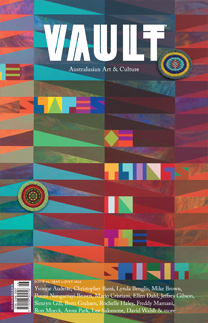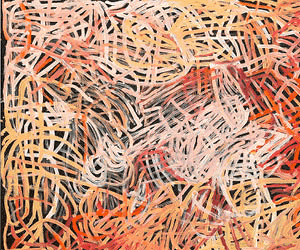Dick Watkins
A Life in Paint
The spotlight has never appealed to Dick Watkins, the senior Australian artist who’s dedicated the last six decades to his quietly revolutionary painterly vision.
In November of 1943, at Peggy Guggenheim’s Art
of This Century gallery on West 57th Street in Manhattan, Clement Greenberg encountered Jackson Pollock’s Mural for the very first time. The essayist and author of the oft-quoted, Marxist-leaning ‘Avant-Garde and Kitsch’, soon became a champion of the self-determination in Abstract Expressionism, and possibly one of Pollock’s greatest and most vocal enthusiasts. Greenberg – who has since been largely credited with veering the centre of the art world from Europe to New York City in the mid-20th century – would later pen his infamous response to Pollock’s Mural for the Partisan Review: “I took one look at it and I thought, ‘Now that’s great art,’ and I knew Jackson was the greatest painter this country has produced.”
At the time, Australian painter Dick Watkins was just a boy – worlds away and utterly enthralled with a little reproduction of a Picasso printed within the pages of a gifted one-volume encyclopaedia. And now, many years later on a warm September afternoon at his home and studio in a leafy gully in Sydney’s Northern Beaches, an older Watkins peers at me across his dining table over thick-rimmed, circular spectacles. “I never felt it was strange or anything,” he says of the Picasso from his childhood. “I just felt it was right, I reacted strongly towards it. And so it went on from there – in a jerky sort of way, bouncing around from thing to thing.”
In 1968, New York’s great Greenberg, at his most authoritative perhaps, paid a visit to Sydney. By then, Dick Watkins was a skilful abstract painter,.. Subscribe to read this article in full
























